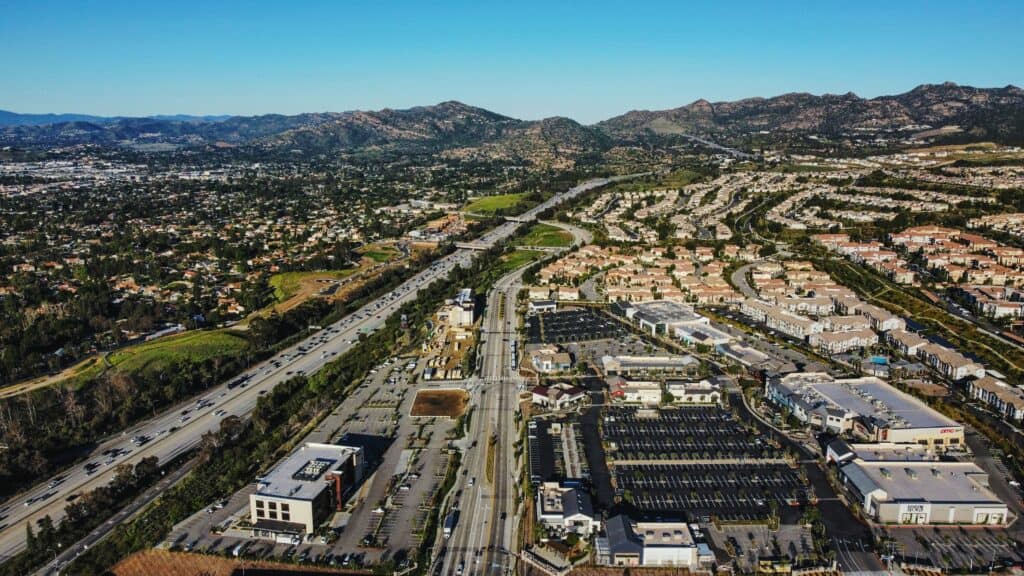Industrial and logistics real estate has become one of the most sought-after asset classes in commercial real estate. From e-commerce logistics to advanced manufacturing, demand for warehouse and distribution space continues to surge across Southern California.
According to CBRE’s U.S. Industrial Figures Q2 2025, the industrial real estate sector has maintained historically low vacancy rates while rent growth remains among the strongest in the nation.
At KEYZ Commercial Real Estate, we help tenants, investors, and developers navigate this evolving landscape. Here’s what’s driving demand — and how these trends are shaping the Southern California industrial market.
Understanding the Demand Drivers
E-Commerce Acceleration
E-commerce continues to reshape industrial real estate globally. With online sales now accounting for over 20% of total retail transactions, warehouse demand has soared.
The Cushman & Wakefield U.S. Industrial MarketBeat Q3 2025 reports that tenants are prioritizing logistics properties near large population centers for faster fulfillment.
KEYZ Insight:
In Los Angeles, Orange County, and the Inland Empire, e-commerce occupiers are increasingly leasing mid-sized distribution centers (100,000–250,000 SF) to achieve last-mile delivery proximity.
The Supply Chain Reinvention
Following recent supply chain disruptions, companies are rethinking their logistics strategies. Many are adopting regional warehousing and nearshoring models to shorten delivery times and reduce risk.
According to JLL’s U.S. Industrial Outlook Q3 2025, demand for cross-dock logistics centers and multi-tenant distribution facilities is surging, particularly within 60 miles of ports and interstate corridors.
KEYZ Strategy:
We advise occupiers to target properties with multimodal access — near I-10, I-15, and I-605 corridors — to maximize logistics efficiency and reach.
Southern California: The Logistics Powerhouse
Home to the Ports of Los Angeles and Long Beach, Southern California is the gateway for more than one-third of all U.S. imports.
Despite rising construction costs, demand for Inland Empire industrial space continues to exceed supply.
According to NAI Capital’s SoCal CRE Outlook 2025:
- Vacancy rates remain under 3% across core logistics markets
- Average rental growth sits between 6–8% year-over-year
- The Inland Empire West corridor accounts for over half of all new deliveries
KEYZ Observation:
Even as new supply enters the market, tenants continue to pre-lease high-clear, automation-ready facilities before completion — underscoring the strength of warehouse demand.
Technology, Automation, and Design Evolution
Modern logistics centers now operate as tech-enabled distribution ecosystems.
Developers are integrating automation, robotics, and sustainable systems such as solar panels and EV infrastructure to attract global occupiers.
The Prologis Research Outlook 2025 projects that automation-ready warehouses lease up to 15% faster than traditional assets.
KEYZ Insight:
Buildings with higher clear heights, robust floor load capacity, and renewable infrastructure now outperform in both lease-up speed and retention.
Investment Appeal and Capital Flows
Industrial real estate remains the top performer among CRE sectors.
According to CBRE’s Global Investor Intentions Survey 2025, industrial assets rank as investors’ first choice for long-term value stability.
KEYZ Capital Perspective:
Institutional buyers are targeting Southern California logistics properties with credit tenants, long leases, and ESG certification — emphasizing operational efficiency and sustainable growth.
Land Scarcity and Redevelopment Opportunities
One of the sector’s greatest challenges is land scarcity. Urban infill sites are rare, forcing developers to repurpose older industrial and retail assets into modern logistics hubs.
Areas like Vernon, Commerce, and Santa Fe Springs are seeing conversions of legacy manufacturing sites into high-efficiency distribution centers.
KEYZ Development Advisory:
We guide owners through entitlement and adaptive reuse opportunities, unlocking hidden value in underutilized assets.
The Sustainability Imperative
Sustainability is now a competitive advantage in the industrial sector.
The Cushman & Wakefield ESG in Real Estate Report shows that ESG-compliant logistics properties enjoy longer lease terms and higher occupancy rates.
KEYZ Viewpoint:
Tenants are increasingly prioritizing LEED-certified and solar-ready warehouses to align with corporate carbon-reduction goals.
Looking Ahead
The Southern California industrial market continues to lead the nation in innovation, absorption, and investment.
E-commerce growth, supply chain optimization, and sustainability are fueling a long-term structural shift — ensuring that logistics and industrial real estate remain in high demand well into the next decade.
📞 Contact the KEYZ Commercial Real Estate team to explore logistics, industrial, and investment opportunities across Southern California.
👉 Visit keyzcre.com for listings, advisory services, and research insights.

